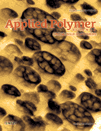Rheological and aging properties of ultraviolet absorber/styrene–butadiene–styrene–modified bitumens
Abstract
The prevention of the ultraviolet (UV) aging of styrene–butadiene–styrene (SBS)-modified bitumen is of great significance because UV aging is considered to be a critical factor in the deterioration of the performance of bituminous roads. In this study, we selected two UV absorbers (octabenzone and bumetrizole) as modifiers to evaluate their effects on the rheological and UV-aging properties of different SBS-modified bitumens (linear and radial types) by means of dynamic shear rheological testing. The thermooxidative aging of the binders was also investigated through thin-film oven testing. The results show that for the linear- and radial-SBS-modified bitumens, octabenzone only enhanced their elasticity at high temperatures, but bumetrizole could increase the elastic response at intermediate temperatures on the one hand and the viscous response at high temperatures on the other hand. The UV aging of the radial-SBS-modified bitumens could effectively be alleviated by both octabenzone and bumetrizole, whereas that of the linear ones could only be improved by bumetrizole. The influence of the UV absorbers on the thermooxidative-aging properties of the SBS-modified bitumens was dependent on the types of UV absorbers and SBS polymers. © 2012 Wiley Periodicals, Inc. J. Appl. Polym. Sci., 2013




